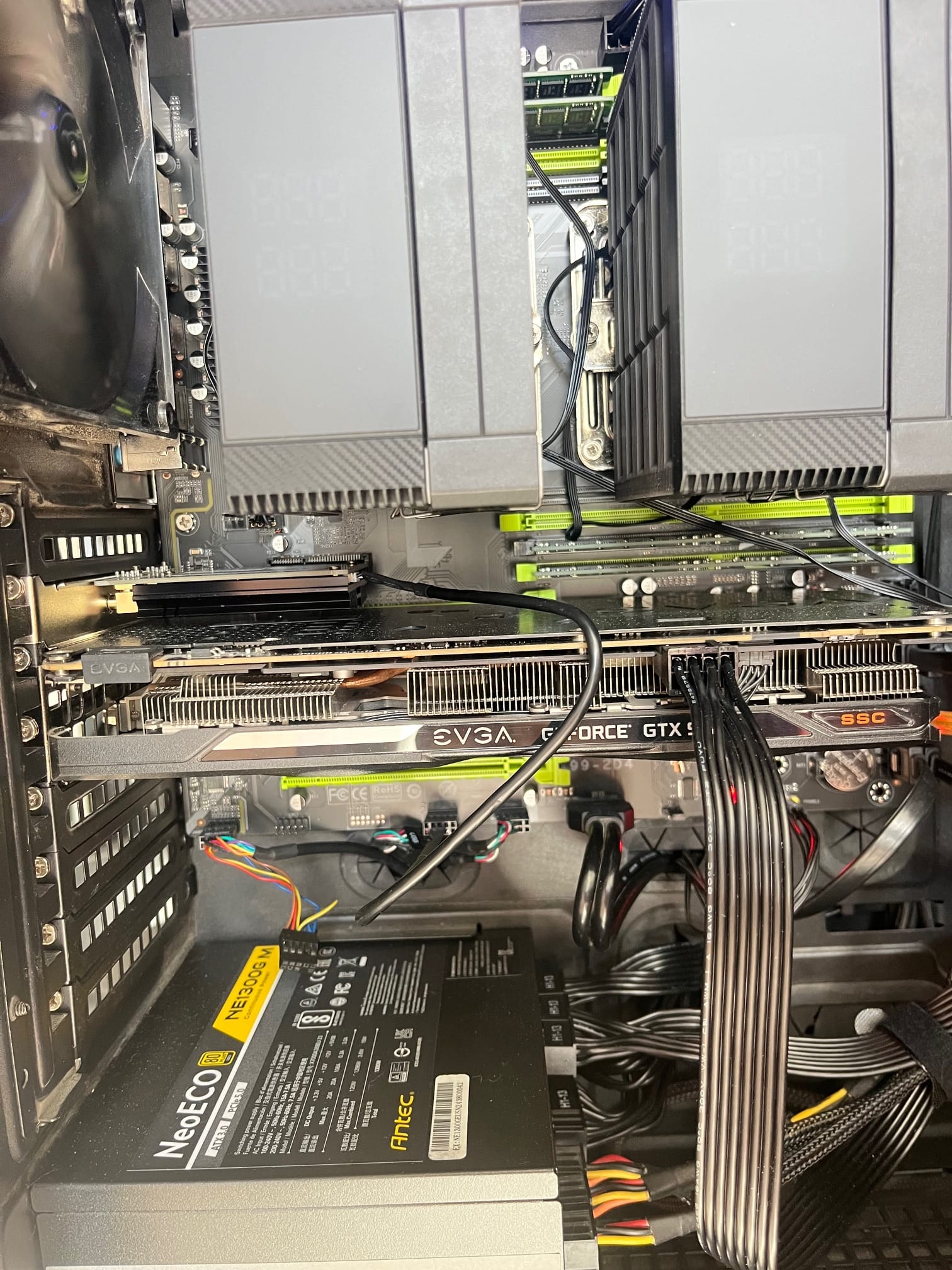What could be better than coming home from the office and finding a few packages waiting at your door? The only thing sweeter is when those packages arrive on a Friday—the start of the weekend—when you can open them with a clear conscience and dive into your favorite home projects.
That’s exactly what happened to me. I walked in and found a box with my long-awaited graphics card, some smaller accessories, and, after a quick stop at KSP, the TP-Link Wi-Fi and Bluetooth PCIe card I had been planning for.
None of this was accidental. This was a carefully orchestrated operation, part of a broader plan for building my AI super server. I had already set up remote access and other essentials in advance, so the only missing piece at this stage was the network card and GPU.
Choosing the Right Wi-Fi Card
I decided to install a TP-Link AX3000, PCIe Wi-Fi card with Bluetooth support. It’s not the most glamorous piece of hardware compared to CPUs and GPUs, but in this situation it was absolutely critical.
I picked it up at my local KSP store for about $55–60—quite reasonable for a dual-purpose card. Not only would this let my server connect over Wi-Fi, but the added Bluetooth support meant I could use wireless peripherals if needed, making it even more versatile.
Installing the Wi-Fi + Bluetooth Card
The installation process was straightforward: open the case, remove the slot cover, slide in the PCIe card, and secure it with a screw. But then came the first surprise:
👉 Bluetooth doesn’t just work over PCIe.
It requires a connection to the motherboard’s USB header.
I hadn’t expected this. My motherboard only has two internal USB headers, both already used to power the front USB ports on my case. That meant I had to make a decision: sacrifice two front-panel USB ports or buy splitter adapters to keep everything functional. Since Bluetooth was absolutely essential, I decided to order additional adapters to resolve this neatly and connect the Wi-Fi card to one of the USB ports temporaly.

Cable Management Challenges
The second surprise was the cable itself. The USB connector from the Wi-Fi card stretched awkwardly across the case, and in my tight build, it became yet another obstacle to manage. This mattered even more because I plan to use all my full-size PCIe slots for GPUs.
Yes, you read that right: my long-term plan includes installing two GPUs—potentially an RTX 2080—and linking them with NVLink. With such ambitions, every millimeter of space and every cable matters.
Why This Matters for My AI Server
Having Wi-Fi and Bluetooth transforms how I can use and place my server. No longer chained to the router by a long cable, I can tuck it under my desk or move it to a different room entirely. If I need to connect Bluetooth headphones or a wireless keyboard for quick maintenance, I can.
Step by Step
Since it’s been a while since I last built a machine from scratch, I decided to approach it carefully, step by step. First, I installed the network card, powered on the system, and confirmed that both Wi-Fi and Bluetooth worked correctly. Only after that did I start preparing for the GPU installation (which I’ll describe in a separate post).
Final Thoughts
This upgrade wasn’t just about plugging in new hardware—it was about careful planning, problem-solving, and keeping an eye on the bigger picture of my AI super server build. The TP-Link Wi-Fi + Bluetooth card may seem like a small step compared to GPUs and CPUs, but it’s an essential part of the puzzle.
And as any builder knows, sometimes it’s the small steps that set the stage for the really big ones.

